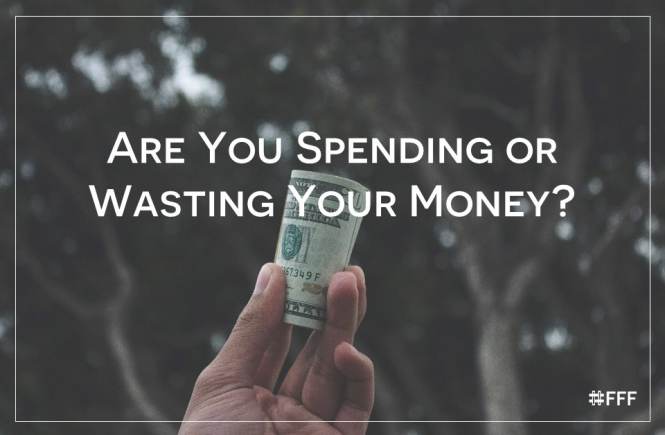If there is a time of the year when you should spend and enjoy it is summer. It is not an excuse to waste money but it is a good time to do what we really enjoy in life. It will of course drain our savings a bit and to make sure that we don’t have to worry about it we first need to fill up our savings to be prepared. The summer season is about to end and we have all the time ahead of us to prepare for next years round of summer spending. Therefore, we are going to focus on an aggressive savings training this month on #FFF which potentially could change your perspective of saving for the time to come. Through different steps each week you can gradually increase your savings intensity to finally reach your full potential.
The Concept of Your Potential to Save
Before we start it is important that you understand the concept of your potential to save. Every person has a capacity to do aggressive savings, it is simple theory black on white, spend only on what you absolutely need and save the rest. However, how much a person actually saves is completely dependent on how much the person want to save. In this sentence “want” is the keyword. Just because we can save to extreme levels doesn’t mean that we should, it is up to each and one of us to decide how much we want to save to live the life we wish to live. This is based on how much money we wish to have on our savings account balanced with how much we want to invest in ourselves.
That’s a lot of wants in one paragraph, let me explain the concept of your potential further through categorizing different types of expenses:
- Necessity – These are expenses we have to pay to be able to live, for example rent and food. Think of it as survival expenses.
- Want – These are expenses that gives added value in our life, if you are passionate about languages then paying for a language course would fall into this category.
- Waste – These are expenses that have little impact on our lives and isn’t really necessary. An example of this is when you go to the store because you ran out of milk, seeing the donuts while hearing your hungry stomach rumble makes them irresistible. The donuts in this case are in fact a waste since they give no nutritional value and you enjoy them for maybe 15 minutes of your life. It is something that you often enjoy for a shorter period of time and you would be perfectly fine without it.
Going back to the concept of your potential to save, your maximum potential will always be the amount of money you’d save if you only, with no exceptions, spend within the necessity category. It’s the full capacity but it does in most cases not yield in the maximum quality of life. That is because money alone doesn’t bring happiness and having a lot of money on your bank account won’t make a big difference. It is on the other hand what you do with the money that brings you happiness and if you manage to spend within the want category, expenses that gives added value in your life, that is when you’ll become happier. As I mentioned before, finding the right level of savings for you is about finding the perfect balance between savings and investments in ourselves.
Why Don’t We Save?
It sounds pretty simple that we only spend on what we need to and what makes us happy and the rest we can save. But why is it still so hard to start saving? The reason why most of us don’t save as much as we would want to is often because we have too many expenses within the waste category. The first problem is awareness. We haven’t reflected over where we actually spend our money and we have no clue about how much we waste. The second problem is that it’s easy to confuse waste with want. If you have a light sugar addiction it might feel like we really want those donuts and they would make us happy while in fact they would have a relatively small impact on our lives in the big picture. If we have a shopping habit it might feel like we have to buy that 38th pair of shoes meanwhile we probably would forget about them within a month if we didn’t buy them. It all comes down to reflection, we need to take the time to think about what we really value in life and where we actually want to spend our money.
Find the Ideal Level to Save
There are different levels of saving from nothing to your full potential. Your ideal level to save depends on where you are in life and what you want to achieve with your savings. As I wrote before, you will most likely not reach maximum happiness while saving to your full capacity, but if you want to achieve a savings goal faster you might need to do some sacrifices within the “want” category of expenses for some time. How much you save depends on how much you are willing to sacrifice and essentially how important your savings goal is to you. It is always the question of what is more important, this expense or reaching my savings goal?
Savings Level 1
The first level of your aggressive savings training starts with reflection. If we don’t know why we want to save the why of wasting money will always be stronger. Use the level 1 printable to note down your reflections or use a notebook or your laptop if preferred.
Why do I want to save?
Identify what your goal of savings is. It can be something concrete like buying a house or it can be more fluffy like achieving financial independence. Regardless of what type of goal you have it is important to know why you want to improve your savings to be able to stay focused.
How important is my savings goal?
Second topic is about the importance of your reason to save. Saving and spending is about sacrifice. If you go to the cinema you are sacrificing the opportunity to save that money that could accumulate to something greater. If you save the money instead of going to the cinema you are sacrificing the opportunity to watch a great movie in a nice setting. How much are you willing to sacrifice in order to reach your saving goal? How important is the cinema to you personally? Are you willing to sacrifice the cinema or your savings? Reflect over how important your savings goal is for you and you’ll be able to put it into perspective when you are faced with the question to spend or not to spend.
Review your spendings
Make an estimation of how much you spend within the following categories in one month with the help of your bank statement. Then take a look at the numbers and categorize the expenses if it’s a necessity, want or waste (remember that one spending category can consist of several expense categories). What can you cut out this month from the waste category?
Take your time and reflect over these questions, your potential to save and what you want to achieve with your savings and you’re a good way on the first step towards more money on your savings account!




